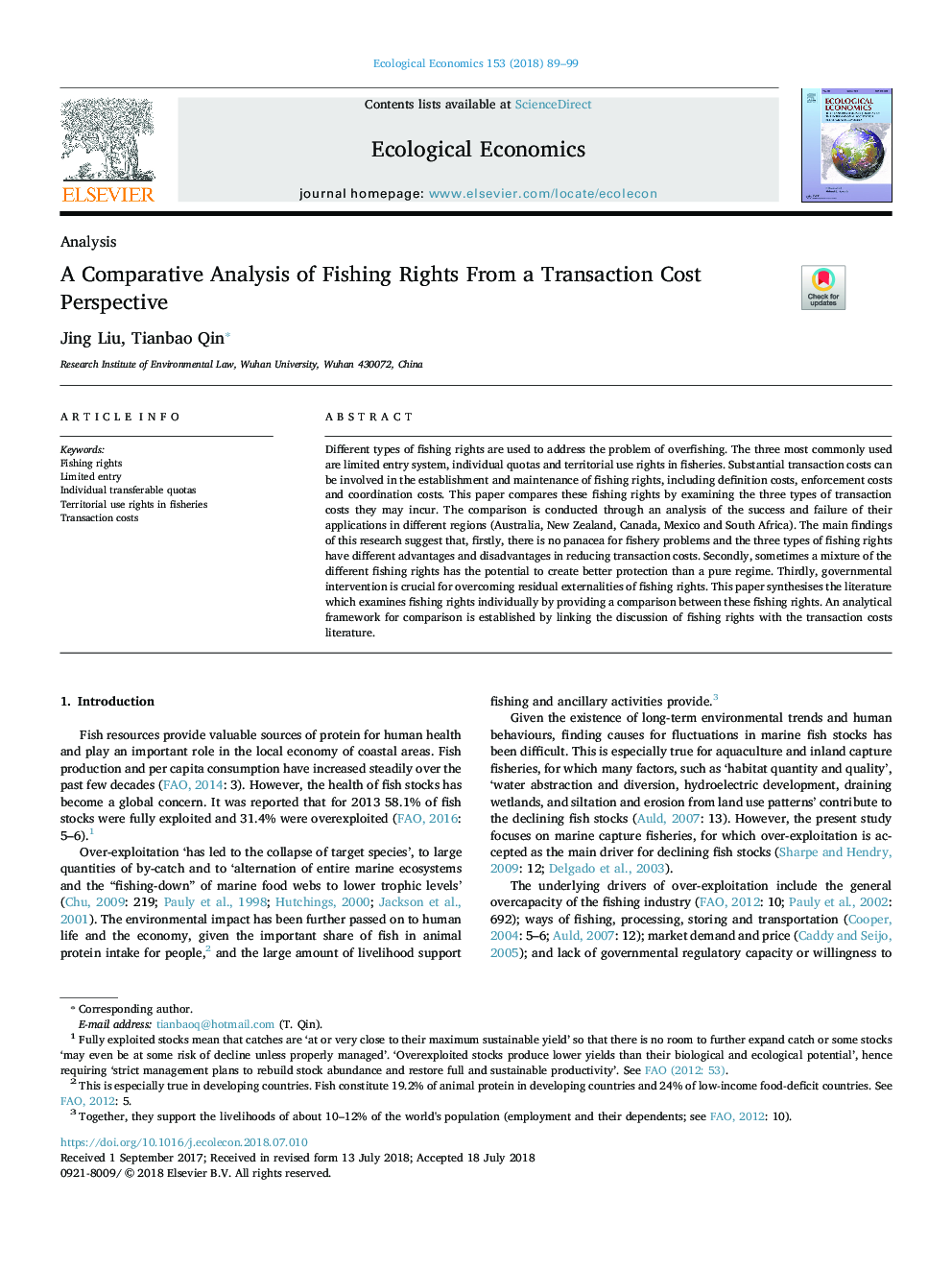| Article ID | Journal | Published Year | Pages | File Type |
|---|---|---|---|---|
| 7343718 | Ecological Economics | 2018 | 11 Pages |
Abstract
Different types of fishing rights are used to address the problem of overfishing. The three most commonly used are limited entry system, individual quotas and territorial use rights in fisheries. Substantial transaction costs can be involved in the establishment and maintenance of fishing rights, including definition costs, enforcement costs and coordination costs. This paper compares these fishing rights by examining the three types of transaction costs they may incur. The comparison is conducted through an analysis of the success and failure of their applications in different regions (Australia, New Zealand, Canada, Mexico and South Africa). The main findings of this research suggest that, firstly, there is no panacea for fishery problems and the three types of fishing rights have different advantages and disadvantages in reducing transaction costs. Secondly, sometimes a mixture of the different fishing rights has the potential to create better protection than a pure regime. Thirdly, governmental intervention is crucial for overcoming residual externalities of fishing rights. This paper synthesises the literature which examines fishing rights individually by providing a comparison between these fishing rights. An analytical framework for comparison is established by linking the discussion of fishing rights with the transaction costs literature.
Related Topics
Life Sciences
Agricultural and Biological Sciences
Ecology, Evolution, Behavior and Systematics
Authors
Jing Liu, Tianbao Qin,
